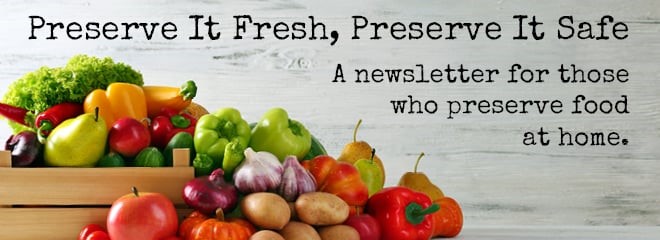
Safety of Home Dried Mushrooms
Fresh mushrooms have a short shelf life, usually 1-3 days at room temperature. For this reason, drying them either commercially or at home is an attractive alternative, because it lowers the water activity to below 0.85, thereby restricting the growth of pathogens (harmful bacteria). When dehydrated to a water activity below 0.85, mushrooms are considered a low-moisture food.

To ensure the safety of home dried mushrooms, it is critical to understand the following:
- If fresh mushrooms are contaminated with pathogens, this risk is carried forward if the dehydration process does not lower the water activity to below 0.85.
- A water activity above .85 allows pathogens to grow and, in some cases, produce toxins that lead to foodborne illness.
- If rehydration is done at room temperature, this creates another opportunity for any pathogens that might be present in the dried mushrooms to resume growth.
- If the rehydrated mushrooms are not properly cooked, foodborne illness can result.
- Research shows that the dangerous bacteria Listeria monocytogenes is commonly associated with fresh mushrooms. This bacterium is especially problematic for pregnant women, who may suffer a miscarriage.
- Research also shows that many pathogens including L. monocytogenes, Salmonella spp., and Bacillus cereus can survive on low-moisture foods (like dried mushrooms) for months during storage. Many related outbreaks have been reported.
- These “survivors” generally have a higher tolerance to heat during the cooking process, which increases the chance that they would survive and make the consumer sick. Furthermore, when the bacteria present produce toxins (e.g., in the case of B. cereus), the cooking step will not destroy the toxins.
With this understanding, the best practices when drying mushrooms at home are:
- Consider purchasing small batches of fresh mushrooms at a time, to avoid the need for dehydration and long-term storage.
- Select good quality mushrooms, to have a better shelf life. Older mushrooms deteriorate much faster at room temperature.
- If dehydrating, wash the mushrooms thoroughly before slicing to reduce the number of microorganisms, including any pathogens present.
- After dehydration, store the mushrooms in vacuum-sealed packaging in a cool, dry place.
- When rehydrating, do so in the fridge to reduce the risk of pathogens growing rapidly, which can lead to foodborne illness.
- When cooking rehydrated mushrooms, consider cooking methods that require high heat and longer cooking times like soups, rather than sautéed vegetables for example.

Finding Reliable Information About Home Food Preservation
Information about food comes at us from many directions. We might scroll through Facebook, Pinterest or another social media platform and be attracted by a new recipe. Most of the time, recipes for main courses or desserts will not pose food safety risks.
Maybe a friend told you about a new canning method. Food preservation recipes that have not been tested for safety could be harmful, or even deadly if the canned food contains the toxin that causes botulism. These are some questions to ask yourself:
- Who is the author of the research or publication? The U.S. Department of Agriculture and universities have conducted reputable food preservation research.
- Is the food preservation information based on current scientific research or opinion? Outdated canning recipes should be retired. An exception: if ingredient amounts and processing times are exactly the same as current food preservation recipes, they could be used.
- Where did you find the information? Examine the URL on the website. Does it end with “.edu” (indicating a university or other educational organization) or “.gov” (indicating a government site)? Universities and government sources are credible sources of food preservation information.
- See the NCFSEN website for current food preservation information from 12 states. https://www.ncrfsma.org/north-central-food-safety-extension-network-ncfsen
Originally published by the University of Missouri Extension
Print or share this newsletter



